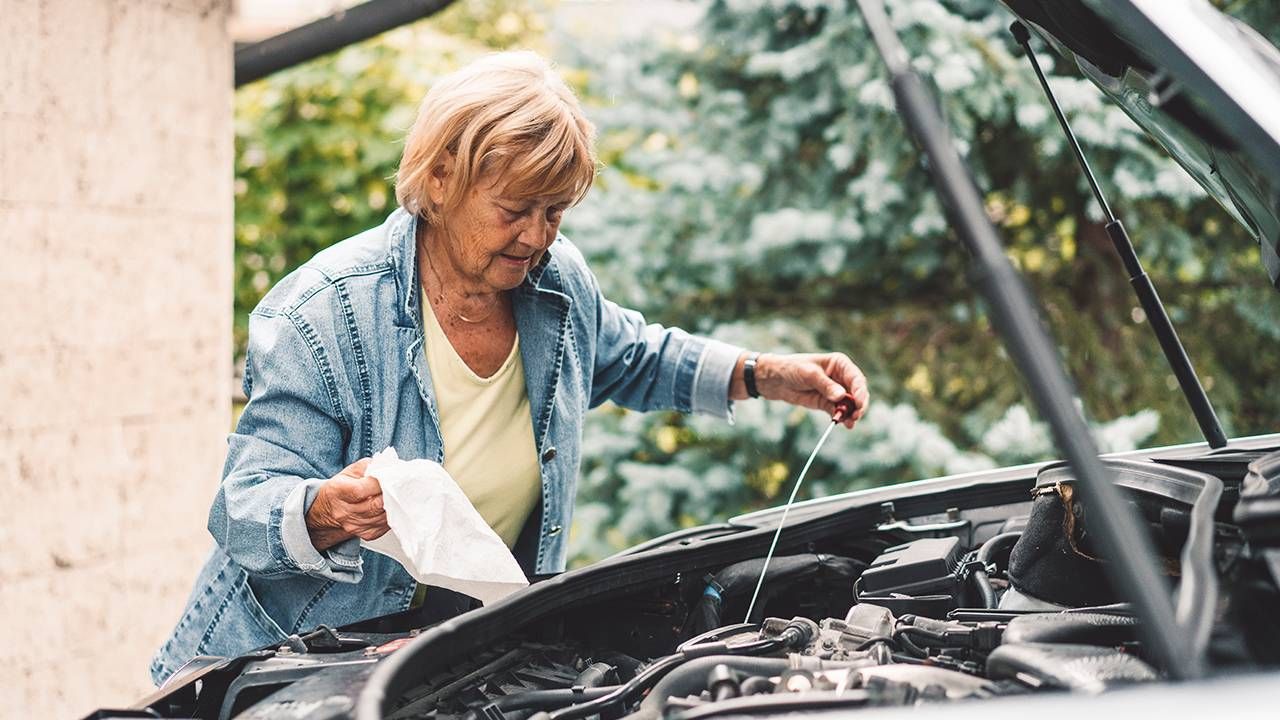Essential Car Maintenance in the Pandemic
5 tips to keep your car running well even if you're driving it less these days
We're a year into a pandemic that you may have thought would last a few weeks or a few months. Perhaps you thought you'd return to the office full-time at some point, but now it's looking like you'll only be going back at a reduced rate or maybe not at all. So, how should you be taking care of your car if you're not driving it much and won't be anytime soon?

As an automotive journalist and founder of the Mechanic Shop Femme company helping car owners protect and maintain their cars, I can tell you that not driving can cause a boatload of problems you may not have considered. They might include rodents eating your wiring, dead batteries and a need to replace your tires.
5 Easy Steps to Care for Your Car
Fortunately, you can avoid most of these issues by taking five simple steps to care for your car. Here they are:
1. Drive at least once a week for at least 30 minutes. Your car was meant to be driven! One of the most common problems that comes from not driving is finding a dead battery just when you actually do need to go somewhere. Batteries drain without use — though age and extreme temperatures can exacerbate this.
But that's not the only possible unpleasantness you could encounter.
Your fuel could begin to degrade if your car has been just sitting for over 30 days.
Your fuel could begin to degrade if your car has been just sitting for over 30 days. That can damage your fuel system, and, of course, cost you money.
You might also see flat spots developing on your tires, which will shorten their lifespan and mean buying new ones.
Your seals and gaskets will begin to dry rot, too, leading to repairs and possible car failure if that problem isn't caught in time.
If you have a hybrid vehicle, you may think you are exempt from battery problems, but you'd be mistaken. Hybrid batteries also rely on your vehicle being driven regularly. And the hybrid battery is significantly more expensive to replace than a standard one: You might pay $3,000 or more for one, compared to about $150 or more normally.
2. Don't delay maintenance because you haven't been driving a lot. At the beginning of the pandemic, automotive journalists and mechanics like me were advising car owners to hold off on maintenance until it became safer to go to auto repair shops. But that was when the pandemic was expected to last a month, tops.
Lately, auto repair shops have adapted, with safety precautions for owners and for employees. So, since you no longer have to risk your health to take care of your vehicle, it's time to get back to caring for it the way you should.
For starters, that means having your oil changed when it's due. Required intervals vary from vehicle to vehicle, so check your owner's manual for the manufacturer's recommended optimal maintenance, even if you haven't reached the recommended mileage.
In addition, don't ignore the pricier, and less frequently required, services like getting your timing belt and coolant replaced at the proper intervals as well. Those are in your owner's manual, too, since they are vehicle specific.
This type of maintenance is preventative, so a short delay once is not a huge issue. But multiple delays will eventually cause the problem the maintenance was attempting to prevent.
Can't find your owner's manual? Go online to find a digital version by searching the year, make, and model of your vehicle plus the words "owner's manual."
3. Clean and wash your car. If just getting rid of the grime and bacteria isn't enough of an incentive for you to make your auto look good inside and out, remember this: Cleaning it helps maintain your investment. That's because washing and cleaning your car protects the exterior from rust and the interior from stains and wear.
Take care to wash tree sap and bird droppings to protect your car's painted surfaces. And now that winter is pretty much over, get rid of any residual salt and dirt. These jobs are especially important if you're working from home and don't have garage parking.
The rule of thumb is to wash your car every other week.
If salt, tree sap or bird droppings sit on your paint, they'll begin to eat away at the clear coat and damage the paint.
The rule of thumb is to wash your car every other week. But if that is beyond your capacity or budget, do it at least once a month.
And if you can't keep your car in a garage, try not to park under trees where tree sap and bird droppings are prevalent.
If your car has leather seats, direct sunlight and your own body oils can damage them, so don't forget to clean and condition them. You can use a brush designed for leather as well as a bottle of cleaner and conditioner to do the job yourself. Cost: about $6 to $15.
4. Watch out for pests. Some of the most expensive damage that happens from a car sitting unused comes from rodents. Specifically, mice eating away at the car's wiring (whether the auto is garaged or parked outdoors). There are a number of reasons rodents may be attracted to your vehicle — from the corn and soy-based coatings used on its wirings to the warmth of the engine.
While there are countless strategies to prevent rodent damage, none are as effective as simply driving your vehicle regularly.
Other methods include leaving your hood up while parked inside your garage if you're not planning to drive for a week or more; using a product hooked up to your car's battery, like Mouse Blocker (about $60 to $100), to emit a high-frequency noise intended to deter mice; spritzing your vehicle with peppermint oil or even lighting it up with an LED lamp placed underneath a car (rodents are primarily drawn to dark places.)
According to Consumer Reports, Honda has recommended using a rodent deterrent tape coated with a spicy capsaicin oil (cost: roughly $36).
5. Regularly check your tire pressure and oil level. Proper tire pressure is immensely important for your safety and your wallet. But it can often be left by the wayside when driving your car seldomly. If you don't ensure proper tire pressure, your vehicle is prone to blowouts — one of the leading causes of high-speed accidents.
Use a tire pressure gauge to check your tire pressure at least once a month. To find out how much air your tires need, check the tire pressure sticker inside your driver's side door or check your owner's manual.
Checking your oil level will help you ensure your engine has enough oil to properly function, avoiding malfunction due to oil leaks and oil consumption. In addition, it will help you catch problems when they occur, instead of waiting until a small problem becomes a big one. It's a good idea to check your oil level once a month, while your car is cold. To do it, simply grab a rag, open your hood and find the dipstick. (I have a video showing you how to do that.)
Next, remove the dipstick, wipe it off on the rag and then reinsert it. The second level is the accurate one.
After removing the dipstick the second time, ensure that the oil is between the two markings on its bottom. If you find the level is low, add some oil. If there is no oil, add some and be sure to have this checked out right away for a major oil leak or irregular engine oil consumption.
Taking these simple care and maintenance tips will keep your car in the best shape and help keep its value up when you eventually sell it.


